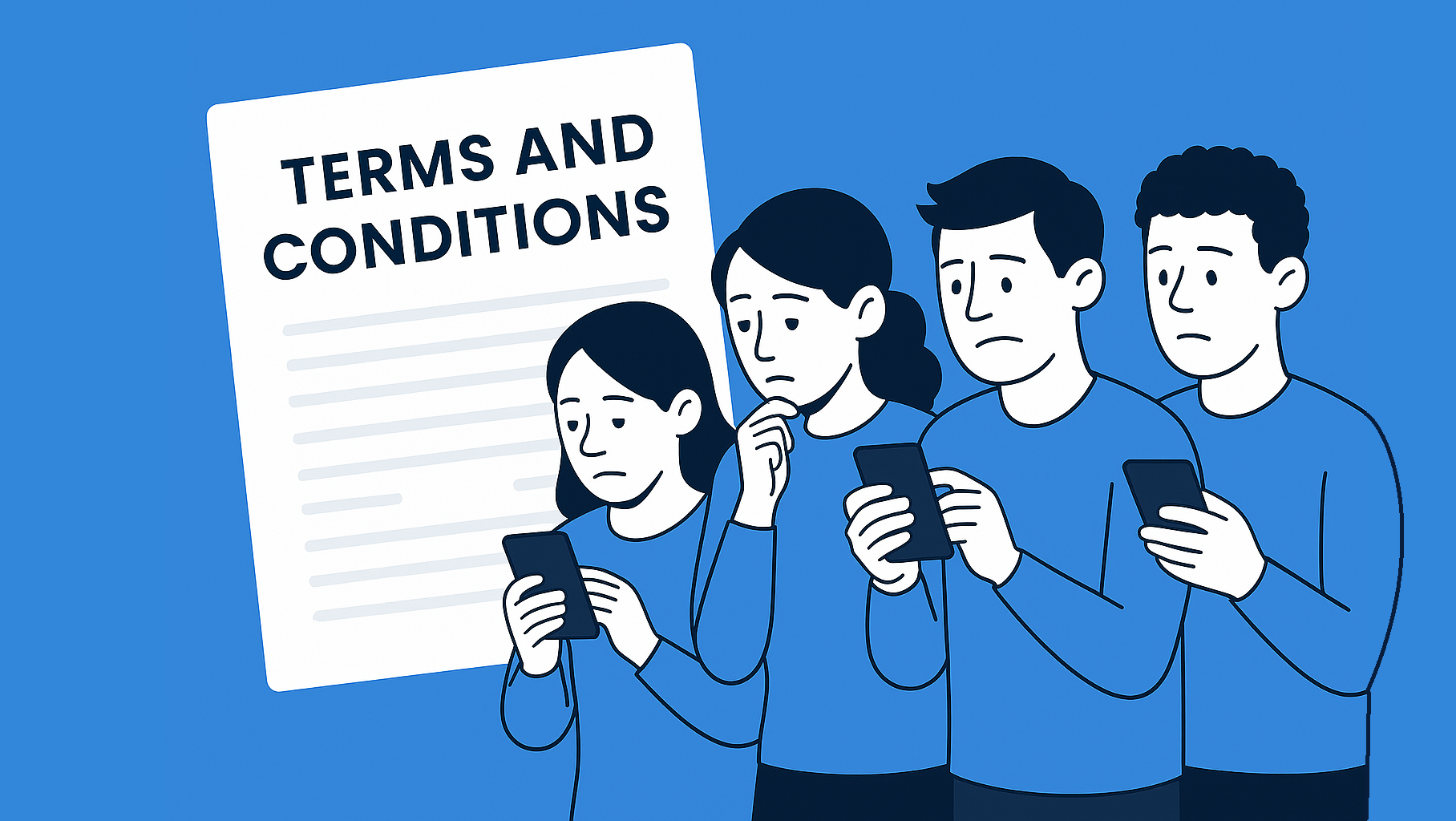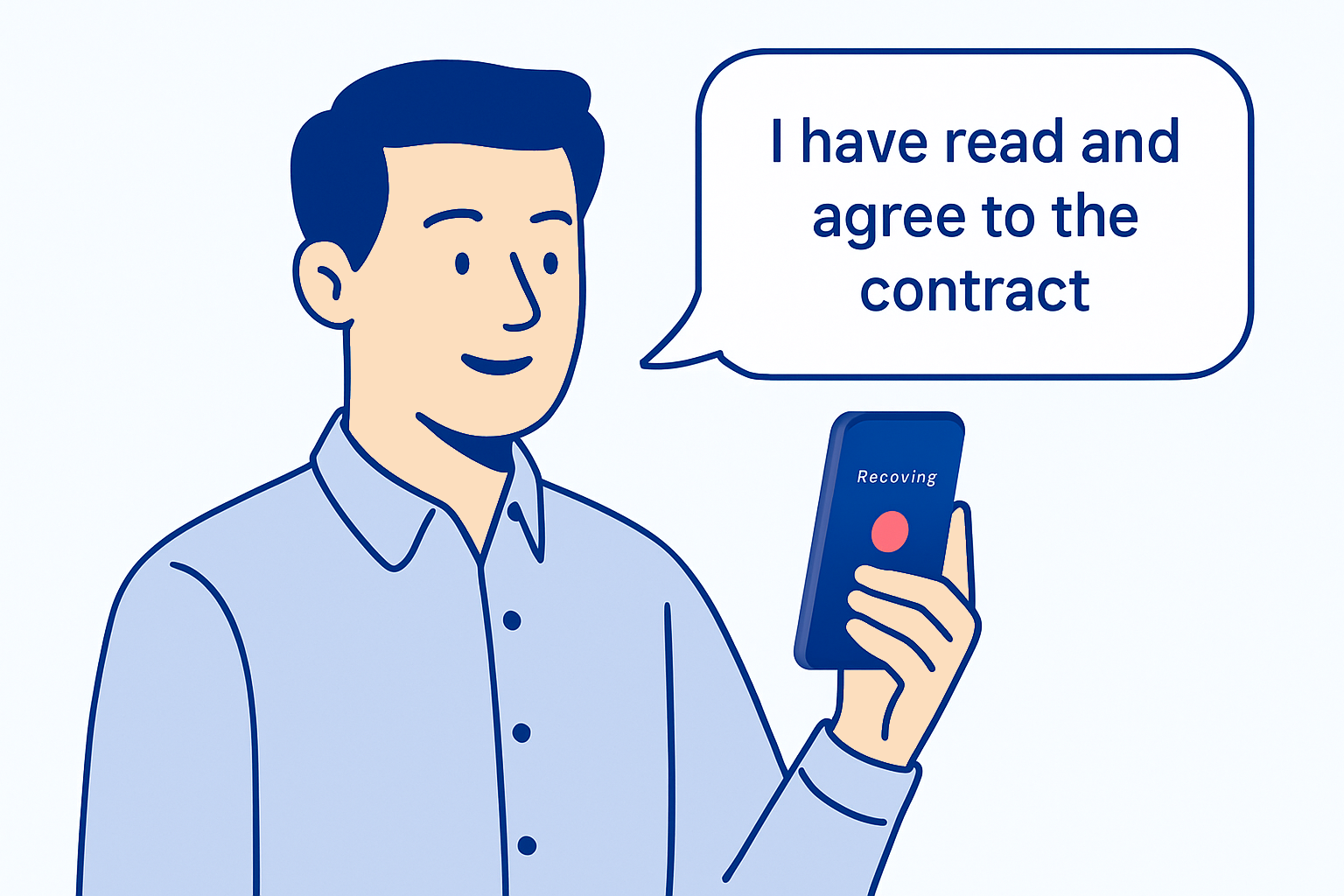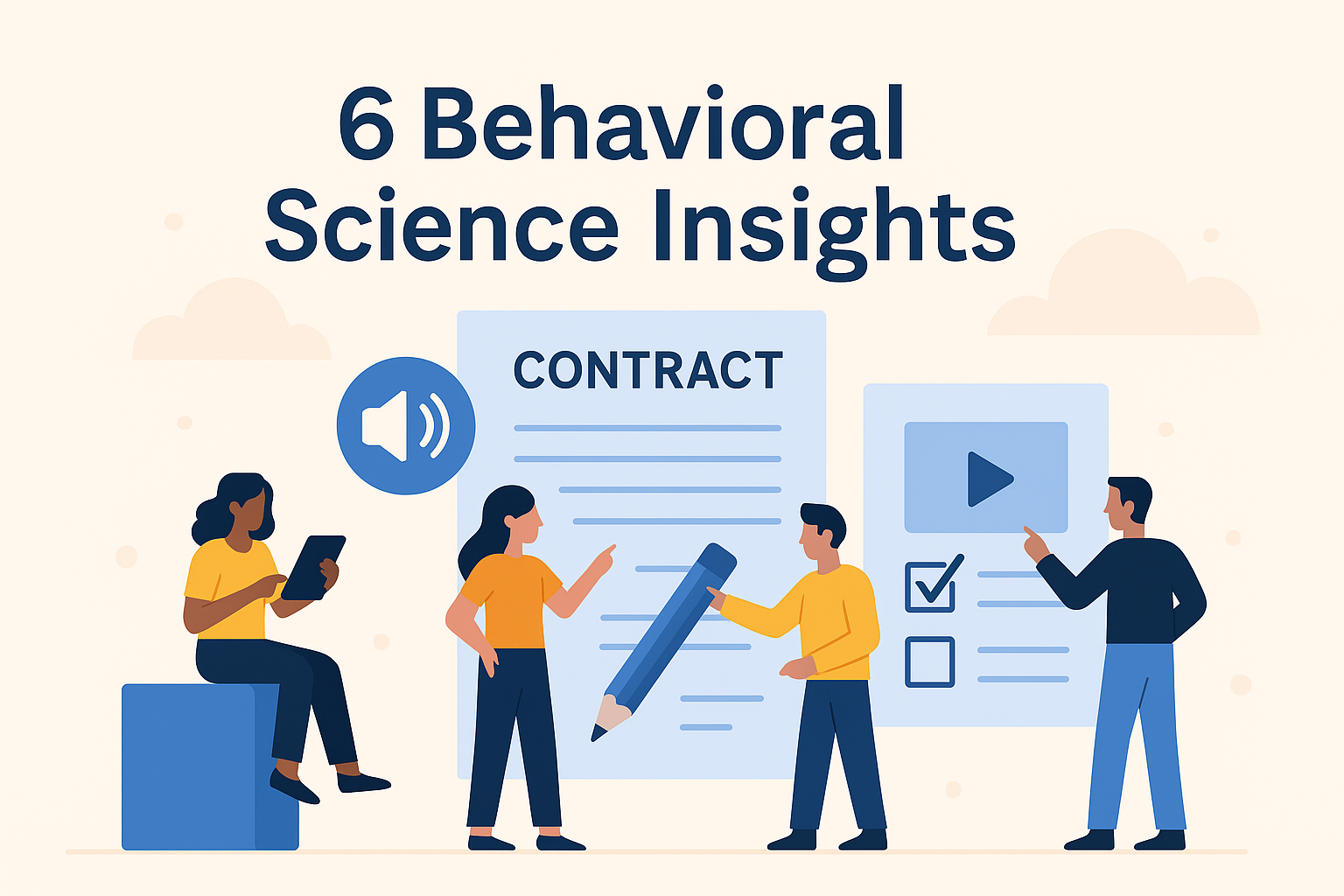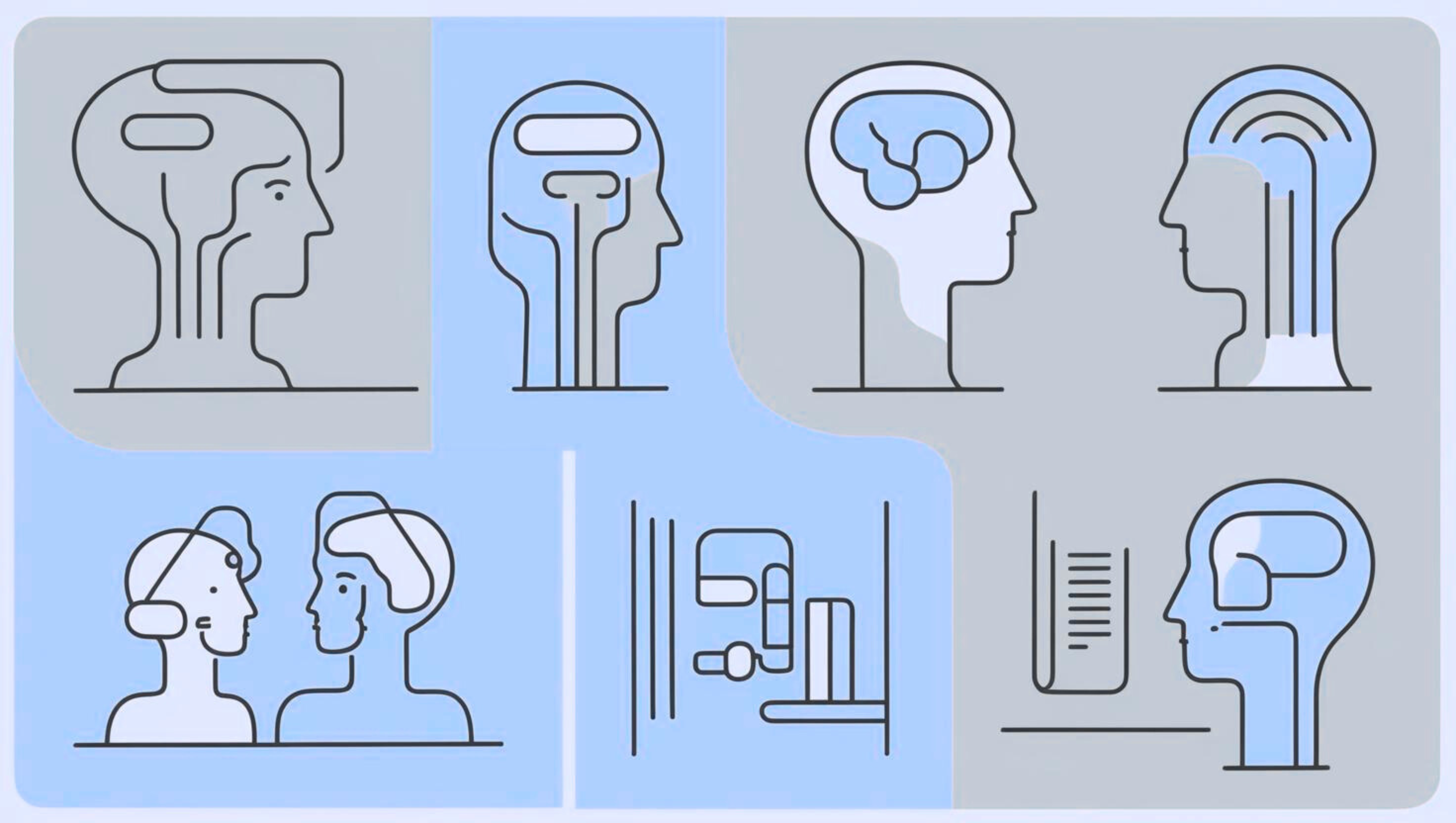Most people don’t read contracts because they’re too long, too complex, and often presented at the wrong moment. Cognitive science shows that when information feels dense or irrelevant, attention drops quickly. That’s why the production effect — the idea that people remember more when they actively engage with content — is so powerful. By combining multimodal learning methods such as voice, video, and text, people process and retain key points more effectively than with static documents alone.
At  i agree, we’ve designed our platform specifically for legal and compliance teams who need to prove not just acceptance, but understanding. Our approach uses repetition and reinforcement to help people truly grasp what they’re agreeing to, turning complex contracts into clear, digestible information. And if you want to know more about how it works in practice, you can dive into our frequently asked questions for deeper insights.
i agree, we’ve designed our platform specifically for legal and compliance teams who need to prove not just acceptance, but understanding. Our approach uses repetition and reinforcement to help people truly grasp what they’re agreeing to, turning complex contracts into clear, digestible information. And if you want to know more about how it works in practice, you can dive into our frequently asked questions for deeper insights.
Most people don’t read contracts and it’s not because they’re lazy. It’s because contracts are often designed in ways that work against how we process information.
Contracts are usually long, packed with dense legal language, and formatted in blocks of uninterrupted text. This overwhelms our working memory, making it hard to retain or even attempt to read.
By the time people get to a contract, whether they’re buying something, signing up, or onboarding, they’ve already made several decisions. Asking them to carefully read and evaluate legal text at that point often leads to mental shortcuts: they skim, scroll, or skip entirely.
Many users feel they have no real choice: “If I want the product or service, I have to agree.” This reduces motivation to read, because the assumption is, “It’s not negotiable anyway.”
Over time, people have developed the habit of not reading contracts, simply because most contracts look the same and rarely change the outcome. We’ve trained ourselves to assume they’re just formalities — and that erodes attention.

91% of people don’t read terms and conditions (Deloitte, 2017).
Even among legal professionals, studies show that comprehension drops sharply when contract language exceeds a Grade 12 reading level.
A recent UK study found most adults read at an average reading age of 12 — far below the level most contracts are written a
People are signing without understanding. That’s a problem for users, and a risk for businesses. When people don’t read, they can’t give informed consent — and that creates ethical, legal, and reputational issues.
The production effect is a powerful but often overlooked psychological principle: people remember things better when they say them out loud.
In cognitive psychology, the production effect refers to the improved memory recall that occurs when information is spoken aloud rather than read silently. When you produce the words — even just mouthing them — you create a stronger memory trace. This effect has been demonstrated in numerous studies, showing that vocalising text can significantly boost retention compared to passive reading.

Speaking engages more areas of the brain than silent reading. It combines:
Visual input (seeing the words),
Auditory output (hearing yourself speak), and
Motor activity (moving your mouth and vocal cords).
This multisensory activity reinforces the information and makes it easier to recall later. You’re not just reading — you’re experiencing.
We use the production effect to help people actually engage with key parts of a contract. Instead of asking someone to silently scroll through legal jargon, we:
Offer spoken summaries of the most important points,
Encourage verbal confirmation of key terms,
Highlight parts that benefit from repetition out loud.
This approach makes understanding active rather than passive — and that leads to better memory, clearer decisions, and more informed consent.
Traditional contracts assume that reading equals understanding. But reading silently, especially under pressure or distraction, often leads to low retention. By prompting people to hear or say key points, we dramatically increase the chances that they actually remember what they’ve agreed to.
Everyone learns differently — but most people retain information better when it’s presented in more than one way. That’s the core idea behind multimodal learning, and it’s central to how we help people understand contracts.
Multimodal learning is a teaching approach that combines multiple forms of communication — such as text, video, audio, and visuals — to improve understanding and memory. Instead of relying on a single format, it engages multiple senses to reinforce the same message in different ways.
This method isn’t just about preference. Research shows that when people process information through more than one sensory channel, they’re more likely to:
Stay focused,
Understand complex ideas, and
Retain the information long term.
The brain is wired to respond to patterns, emotions, and sensory variety. Multimodal content:
Helps information “stick” by creating more neural pathways,
Encourages active engagement, and
Supports different learning styles (visual, auditory, reading/writing, kinesthetic).
In the context of contracts — which are often dry, technical, and difficult to absorb — this approach makes a huge difference.
Most platforms rely on static PDFs or blocks of legal text. We take a different approach by combining:
Plain-English summaries (text),
Spoken explanations (voice),
Short explainer videos (visual + auditory),
Prompted interactions (e.g. questions, confirmations).
By reinforcing the same message in multiple ways, we help people truly understand what they’re agreeing to — not just passively skim through it.
This method also helps overcome common barriers to understanding:
Low literacy – spoken content helps where written language might fail.
Visual impairments – voice and video offer alternatives.
Neurodiversity – different formats cater to different cognitive needs.

When people remember what they’ve agreed to, they’re more confident, more informed, and more likely to comply. That’s not just good for the user — it reduces risk, increases trust, and improves outcomes for businesses too.
If you want people to truly understand what they’re agreeing to, you need to go beyond legal compliance — and start thinking like an educator. Understanding comes from clarity, context, and engagement. Here’s how to make it happen.
Don’t bury the key points deep in the fine print. Begin with a plain-English summary of the most important terms: what’s being agreed to, any fees, timelines, cancellation rules, or consequences. This gives the user a mental framework before they see the full detail.
Tip: Use headings like “What you need to know” or “The key points” to guide attention.
Avoid legal jargon and long, complex sentences. Most people read at a lower level than contracts are written, so aim for clarity over cleverness. If legal language is necessary, explain it in plain terms nearby.
Tip: Tools like Hemingway Editor or Flesch–Kincaid scores can help check readability.
Wall-to-wall text causes fatigue. Structure the content into digestible chunks with clear subheadings, bullet points, and spacing. Think of it like a conversation — not a textbook.
Tip: Use visual breaks, collapsible sections, or hover-over definitions for longer terms.
People absorb information differently. Some prefer to listen or watch instead of read. A short spoken explanation or animated summary can increase engagement and memory — especially when paired with key text.
Tip: Let users choose how they consume information — read it, hear it, or watch it.
Just like in education, repetition boosts retention. Revisit the key terms at different moments — at the beginning, after important sections, and again at the end when asking for agreement.
Tip: Use simple callouts or recap boxes to reinforce the big points.
Don’t just assume someone has read and understood. Ask them to confirm or reflect on the key terms. A quick “Did this make sense?” prompt or a short question helps users stay alert and ensures informed consent.
Tip: Keep it lightweight — it’s not a test, it’s a confidence check.
Contracts aren’t just legal documents — they’re experiences. Design them the same way you would design a product: with empathy, clarity, and accessibility in mind.
When people feel confident in what they’re agreeing to, they’re more likely to trust you, stay compliant, and make better decisions. That’s not just a better contract — it’s a better relationship.
Even when information is clear, people rarely remember everything the first time they see it. That’s why repetition is essential — especially when it comes to contracts.
From a learning science perspective, repeated exposure to information strengthens memory. It tells the brain: this is important. When people encounter the same message in different ways — at different times and in different formats — it’s far more likely to stick.
In behavioural psychology, this is known as the spacing effect: the more spaced-out and repeated the exposure, the better the long-term retention.
Repetition helps move information from short-term memory to long-term understanding. Instead of just glancing over a term once and forgetting it, users get multiple chances to process it — visually, audibly, and actively.
This is especially important for contract terms that may be unfamiliar, high-stakes, or time-sensitive.
On our platform, we reinforce key points at several moments:
At the start — in a plain-English summary
Within the flow — through visual highlights and voice prompts
At key decision points — before users confirm or proceed
At the end — through a final spoken recap or checklist
This layered repetition ensures that even if someone misses a detail early on, they’re likely to catch it later.
We don’t just repeat content — we restate it in different ways:
Text for readers
Voice for listeners
Video for visual learners
Prompts for interaction
Each format reinforces the others, increasing engagement and making comprehension more likely across a wider range of users.
Boosts retention: More touchpoints = better memory.
Reduces risk: People are less likely to miss or misunderstand key terms.
Increases confidence: Users feel more secure in what they’ve agreed to.
In short, repetition isn’t annoying — it’s empowering. Done right, it’s what turns a complex document into something people actually remember and understand.
Our solution is built with the needs of regulated firms in mind. Our methods support:
We don’t just make contracts quicker — we make them better informed and more enforceable.

Most people skip reading contracts because they’re long, full of legal jargon, and hard to understand. In fact, research shows that 91% of people consent to terms without reading them. Our brains often treat contracts as background noise—something we “just accept” to move forward.
The production effect is a psychological phenomenon where people remember things better when they say them out loud. We use this insight to prompt users to hear or speak summaries of key contract points—boosting their recall and improving comprehension.
Multimodal learning involves using multiple types of content—like text, video, and audio—to help people understand information better. Different people learn in different ways, so combining formats makes it more likely that the message will stick.
We apply behavioural science principles to make important contract information easier to notice, remember, and understand. Techniques like repetition, simplified summaries, and spoken prompts help users engage with content more deeply.
Use clear language, highlight the important stuff, and avoid overwhelming readers with too much detail all at once. You can also offer video or audio summaries, break things into chunks, and check understanding with short questions or prompts.
Yes. Our approach supports informed consent while still meeting legal and regulatory requirements. By making content easier to engage with, teams reduce risk and improve user confidence—without sacrificing legal accuracy.
It’s more than presentation. We rethink how people process legal information using behavioural science, so users don’t just see the terms—they actually understand them.
If you have more questions, take a look at our full FAQs page where we cover a wider range of topics in more detail. It’s a quick way to find answers and explore other subjects that might be useful to you.


